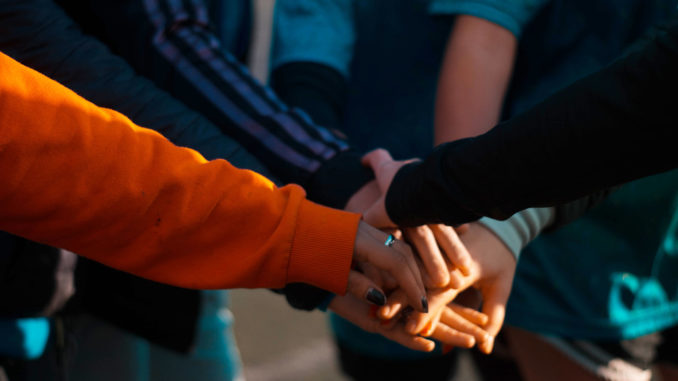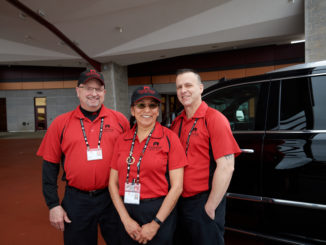By Guest Author Richard A. Picard III, Director of Public Relations & Advertising, Cypress Bayou Casino Hotel, Tribal Affiliation: Chitimacha Tribe of Louisiana
There are positive links between corporate social responsibility activities and firm profitability, with an ever-increasing number of stakeholders involved – from host communities to team members to guests. The definition of what constitutes CSR is a bit of a problem, as well as what constitutes a positive impact on society. Tribal casino operators have invested their profits from gaming, either voluntarily or voluntold through compacts with the state, to create and fund problem gaming programs. These programs are generally considered one of the only worthy philanthropic causes to mitigate the perceived dark side of gaming operations. Several gaming compacts forced the development of various Tribal foundations to eradicate or mitigate the perceived social damage caused by gaming – a few of these Tribes are limited on the ability to fund other Tribes or Tribal members through their foundations. In my opinion, the overreach by some of these agreements are egregious and is one of the deciding factors for why many Tribes do not want to talk about their philanthropic efforts.
There are also cultural implications specific to Tribal nations, one of which is humility. Tribal people are not boastful and prefer to help those around them from a distance. Tribes get directly involved with many causes, but choose to fly as low as possible under the proverbial radar. Modesty is a key defining cultural characteristic of Tribal people. We, as Tribal people, want to give to everyone and help in any way that we can; we are giving in nature, even when we do not have much to give. It is a fantastic problem to have, but unfortunately, there are far too many willing to take advantage of our inherent giving nature. The solution? Create a charitable foundation or set of standards upon which to decide which donation requests will receive funding.
Create a comprehensive public relations campaign to encompass all philanthropic efforts, then use your team to help identify charitable and volunteer opportunities in the community. Next, create clear guidelines that act as a gatekeeper for what activities can and will be funded. Make sure to involve your team members early on in the process to amplify your efforts. The guidelines should be simple and easy to find on your website. Many of us in Indian Gaming are located in rural areas and are dependent on the local market; therefore, it is important that the events we sponsor and causes we support are in the areas that our guests and team members live, work and play.
Managing public perception can be difficult, but it is a necessary business management activity. Here is where it impacts the bottom line: these perceptions have the power to impact the longevity of Tribal government gaming as a permanent policy embedded in the Tribal-federal relationship (Ponting, Ponting, & Spilde, 2016). Tribal communities have reinvigorated pride, economic and cultural initiatives, as well as increased Tribal self-sufficiency as a result of gaming. There is a positive link between Tribal gaming and the stakeholders involved. Communities are thriving, tax bases have grown, team member benefits are fantastic and Tribes care about the communities in which they do business. Those are facts. What is more important is that since many Tribal casinos are located in economically depressed areas, the philanthropic activities have a hugely beneficial effect on the community. I propose that we think of charitable giving as a form of corporate social responsibility.
Let’s go all-in on Tribal philanthropy!
Let’s talk about how to fully utilize team members as our cheerleaders; give them the megaphone. After all, the research demonstrates that they are more than willing to talk about your good deeds with your guests – it gives them a sense of pride, belonging, camaraderie with their fellow teammates and a thorough understanding of the Tribe and its related enterprises. We can shout, “We are all in this together!” The process will take some heavy lifting, a new way of thinking and some creativity; however, the results will be worth the effort.
Step 1 – Identify.
Identify opportunities to help that align with the values of the Tribe, the business unit and the workforce. For example, many Tribes are concerned with environmental stewardship. If environmentalism is an important concept to the Tribe, then why would anyone attempt to align the business unit with another cause? What is it that is most important to your organization? What is the business unit’s implicit and explicit purpose? Bonus points for those that can help your workforce, local region and impact the economy. Think about the education level in your area. What are the local literacy and high school graduation rates? Are they low? If so, think about holding a high school equivalency prep course on-property and allow the community and your team to attend – free of charge, of course. The results are sure to be astounding!
Step 2 – Ensure alignment.
Align specific opportunities with those who care the most in your workforce. For example, can you post a sign-up sheet for a quarterly day of giving? Post your projects in prominent team member areas to allow your team members to sign up for a cause that they care most about. Answer questions about pay, time away from work and how long you expect the project to last. Many of you would be surprised at how many are willing to give their time on a day off versus those who just want a free day off from work. Track volunteer hours and promote the total in a common area with project sign-up sheets – it instills a sense of pride that they were a part of it and can sway other team members to sign up for other worthy causes. Create community involvement goals and celebrate milestones.
Step 3 – Inform.
Give your team members and the public information about your efforts. Press conference? Sure! Send bullet points to your team? Absolutely! Provide the facts and allow team members to talk about them with your guests – they want to talk about your good deeds. This is how we build human-to-human connections. Provide your team with information about the Tribe, and better yet, take them on a tour of the reservation so that they can see the impact of casino operations. Provide them with enough information to answer some of the most commonly asked questions: “Are we on a reservation,” and “How many Tribal members are there,” among the many, many others. They will appreciate the information and are willing to spread it. Ensure that there are continual lines of communication on Tribal happenings and local impact.
Step 4 – Promote.
Give your team a reason to share after you have given them the information. Get creative by sharing your message and promoting your cause at the same time. There is a myriad of ways to get the guest involved and asking questions. We are all familiar with promotional items, digital buttons, direct mailers and other forms of event marketing – use them! Give promotional items out on the casino floor or ask that all team members wear a button featuring a logo or phrase of your cause. Provide information about the event or cause in your core monthly mailer, on your internal digital signage and other marketing communications to get the public interested and asking questions. You have provided your team members with “inside” information about your cause or event, and they are more than willing to talk to a curious guest about it. People crave social connections and like to share information, especially when they have the inside “scoop.” It gives them a sense of pride in their ability to share that information, which solidifies the bond between themselves, the guest and the Tribal owners – and most importantly, your brand. Think of it this way, how many times has someone told you about a bargain they found? Psychologically, they want to share the wealth. This is no different: when a person is proud of something, they want to tell others about it.
Guest-facing roles are uniquely positioned to communicate messages related to Tribal facts, Tribal charitable giving, social investments and other causes (2016). Investment in a robust education program for Tribal gaming team members can act as a powerful guest retention tool, as well as positively impact team member satisfaction and loyalty. Provide timely updates to your team. According to the research, Tribal gaming team members respond very favorably to knowledge about Tribal gaming investment into charitable efforts. The research suggests that engaging Tribal casino team members directly in the development of future giving campaigns, public education and outreach will not only provide a return to the gaming operation through team member retention and loyalty, but will also provide benefits to the Tribe in the form of political capital (2016). Remember, your guests see casino team members as a source of information about the Tribe, not just about the gaming experience. Get your team members involved so that they can share your story!
Guest Column Contributed by Richard Picard, a member of the Chitimacha Tribe of Louisiana, is the Director of Public Relations & Advertising at Cypress Bayou Casino Hotel in Charenton, Louisiana.
References:
Ponting, S. S.-A., Ponting, J., & Spilde, K. (2016). Identifying Opportunities to Inform and Inspire: Tribal Casino Employee Perceptions of Tribal Self Sufficiency and Philanthropy. UNLV Gaming Research & Review Journal, 20(2), 85–103.




